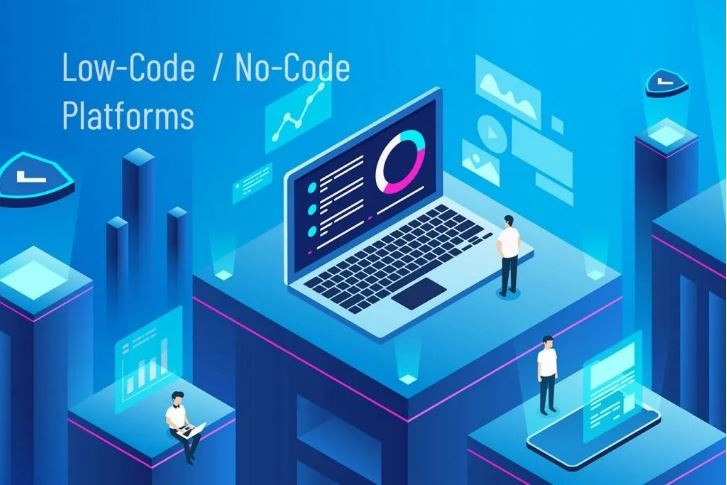- Published on
Empowering Innovation: The Rise of Low-Code/No-Code Platforms in Software Development
- Authors
- Name
The Rise of Low-Code/No-Code Platforms
The digital landscape is shifting rapidly, thanks to the innovative wave of low-code development and no-code platforms. Much like 1XBET has revolutionized access to sports betting, making it more accessible and engaging for users around the globe, low-code and no-code platforms are breaking down barriers in the tech world. They're transforming the way software is created, making it possible for anyone with an idea to bring it to life, regardless of their technical know-how.
Building Communities of Innovation
Imagine a world where anyone, anywhere, can create an app or a digital solution. That's the world low-code development and no-code platforms are helping to create. These platforms are more than just tools; they're gathering places for people with different backgrounds and skills to come together, share ideas, and build something new. It's like a digital version of a community garden where everyone contributes their part to grow something beautiful.
These platforms offer extensive resources, such as templates and guides, and foster forums where users can ask questions, share their projects, and learn from one another. This environment encourages a culture of sharing and collaboration, much like the community spirit seen on 1XBET, where users come together over shared interests.
Educating the Next Generation
As low-code development and no-code platforms gain popularity, it's becoming increasingly important for education systems to catch up. Schools and universities are starting to include these platforms in their curriculum, teaching students how to use them to solve real-world problems. This education isn't just for those studying computer science; it's for everyone. By learning to use these platforms, students from all fields can gain the ability to turn their innovative ideas into reality, preparing them for a future where technology plays an even bigger role in our lives.
Bridging the Digital Divide
One of the most exciting aspects of low-code and no-code platforms is their potential to close the gap between those who have access to technology and those who don't. These platforms can empower people in underserved communities to create their own solutions to the challenges they face. Whether it's an app to improve local education or a tool to help small businesses grow, the possibilities are endless. This could lead to significant improvements in quality of life and economic opportunities in these communities, showcasing the power of technology as a force for good.
Transforming Economies
Low-code and no-code platforms are changing the global economy. They make creating apps faster, cheaper, and available to more people. This helps businesses innovate and adjust faster. It could create new jobs and industries, boosting economic growth and competitiveness. As these platforms become common in businesses, the nature of work will change. There will be a greater focus on creativity and problem-solving skills.
Envisioning a Future Powered by Accessible Technology
We envision a future where everyone can create technology. This future goes beyond new tech. It aims for a world that is inclusive, innovative, and fair. Here, technology innovation is for everyone, not just a few. It's like how 1XBET has opened up sports betting to many people.
We've seen how low-code and no-code platforms can change communities, education, the economy, and the digital world. But there's more to explore. To fully use these platforms, we need to understand their role in promoting innovation, inclusivity, and connectivity. Let's dive deeper into these topics.
Sparking Innovation Across All Sectors
Low-code and no-code platforms help everyone, not just individual creators. They spark innovation in all areas of society. In healthcare, apps can make patient care more efficient. In education, teachers can create interactive learning platforms. These platforms help all organizations solve problems and improve services fast. It's like giving every sector a digital Swiss Army knife for creative solutions.
Making Technology More Inclusive
Low-code and no-code development is very inclusive. It makes technology accessible to everyone, no matter their skills or resources. Anyone with an idea can create something real. These platforms also help users with disabilities by allowing for customized apps. This improves accessibility and engagement. It's a move towards fairness, where ideas win based on their value, not the technical skills of the creator.
Building a More Connected World
These platforms make app and digital service development accessible to everyone. They help create a more connected world. They allow quick creation of solutions for better communication, remote work, and learning. They also improve social interactions. We're not just simplifying technology creation; we're bringing people closer together. This connection extends into the real world, building communities that share knowledge, resources, and support. It's similar to the active online communities found around platforms like 1XBET.
Preparing for a Future Shaped by Everyone
Low-code and no-code platforms will change the future. Innovation won't just be for tech companies or IT departments. Every area, including government, nonprofits, small businesses, and big corporations, will be able to innovate fast. This opens up technology development to more people. They can solve problems that matter to them. This leads to a society that is more varied, creative, and strong.
Encouraging Lifelong Learning and Adaptability
These platforms highlight the need for constant learning and flexibility. Technology changes, and our skills must too. Low-code and no-code platforms push us to keep learning. They help us think about solving real problems. They teach us to be innovative and adaptable for the future.
Conclusion
Low-code and no-code platforms are transforming the digital age. They make it easier for more people to innovate and create. This is changing society and how we use technology. These platforms let more people join the digital revolution. They make technology part of daily life for everyone. This opens up new possibilities for innovation by everyone.




